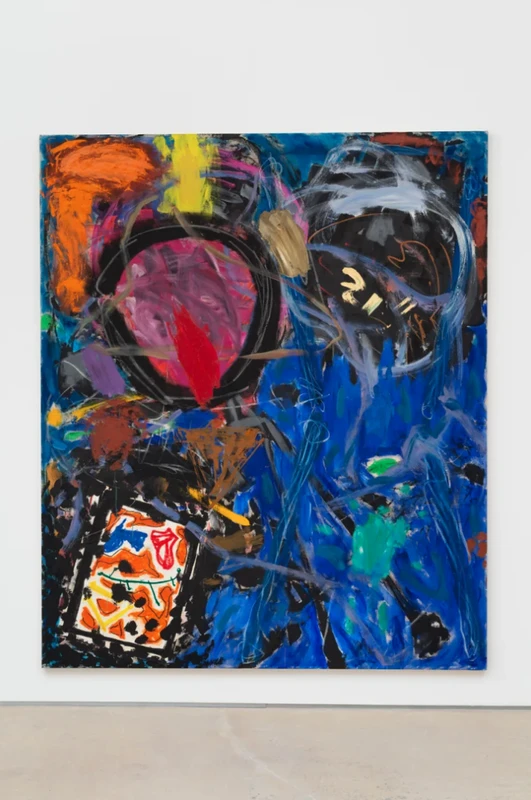Basil Beattie


b. 1935, United Kingdom
Basil Beattie RA (b. 1935, West Hartlepool, UK) graduated from the Royal Academy schools in 1961 and was elected a member of the Royal Academy of Arts in 2006. Beattie lives and works in Mitcham, Surrey.
Over a sixty-year career, Basil Beattie has remained part of a milieu of British artists whose works continue the legacy of Abstract Expressionism. Beattie was a pioneer of a new approach to painting in post-war Britain, having been significantly influenced by The New American Painting show at the Tate in 1959, in particular the works of Mark Rothko and Barnett Newman. These formative elements would persuade and mould the parameters of Beattie’s work in the 1960s and early ’70s, but it was not long before he abandoned a purely formal approach and developed his own type of abstract painting, which has served to distinguish himself from many other artists working at the time.
In the late 1980s Beattie embarked on a new group of paintings which constituted a visual manifesto – establishing imagery and a painterly style that the artist has since become synonymous with. In a pivotal series of works shown at the Curwen Gallery in 1987, Beattie created three monumental works – painting a grid of delineated boxes in which energetic brushstrokes threaten to burst out of the structure. In each section simple pictograms read as ladders, towers or arches – motifs he would return to throughout his career. Art historian and critic Mel Gooding states:
‘Their mural-like dimensions and placement suggested that these paintings were, indeed, the writing on the wall, enigmatic glyphic conglomerations, the prophetic urtexts of Beattie’s expressive pictorial language.’ (2016)
By the mid-1990s, while form, process, application and material substance of the paint, remained as key principles to Beattie, he began to employ new techniques of drama and subjectivity in order to develop a new form of abstraction. The nature of this development is apparent in the emergence of a series of recurrent motifs in both his small-scale works and his vast canvases: thick painted arcs, linear brushstrokes, cell-like planes, and suggestive shapes. As writer and curator Paul Moorhouse writes:
‘Often [Beattie’s] motifs appear intriguingly familiar: doors, ladders and towers are implied. Other shapes are more elusive, less recognisable. But always these elements are so strongly defined, and their presence so convincingly asserted, that the effect is of the protagonists enacting a visual drama’ (2011)
When Beattie talks about his role as a painter, he refers to himself as a 'sort of symbolist', one who alludes to but avoids making direct reference to human form in order to express subjective experiences. He considers his successful works to be those which have a kind of potency, hover in space and have a molten quality to the paint, as if it has reached melting point. These descriptions serve to highlight a certain elusiveness which Beattie considers to be essential to the making of successful work. Although the pictorial elements hold significant and undeniable psychological implications, Beattie's paintings gain further meaning through the masterful way in which he works and manipulates the painted surface.
Resolutely working on one painting at a time, in the studio Beattie creates moments of clarity for himself by looking inwards rather than to the outside world for inspiration. Occupying both mental and physical space, Beattie’s works are about the dynamics of human experience – our emotions, memories and fleeting moments.
Beattie’s work has been featured in numerous exhibitions at prestigious institutions, including solo shows at Tate Britain, London, UK; Royal Academy of Arts, London, UK; Middlesbrough Institute of Modern Art, UK; Jerwood Gallery, Hastings, UK; IKON Gallery, Birmingham, UK; Castlefield Gallery, Manchester, UK; Sadler’s Wells Theatre, London, UK; and Goldsmiths Gallery, London, UK. His works have been included in critical group exhibitions at the Barbican Centre, London, UK; Camden Arts Centre (London, UK) as well as the Jerwood Painting Prize 1998 and 2001 at Jerwood Gallery, London, UK; and Gallery of Modern Art, Glasgow, UK; and John Moores Painting Prize exhibition in 2015, 2016 and 2017 at Walker Art Gallery, Liverpool, UK. Beattie’s work can be found in numerous public and private collections including: Arts Council England; Tate collections; Contemporary Art Society; Deutsche Bank; Government Art Collection; NatWest Group Art; Whitworth Art Gallery, Manchester; Royal Academy Collection; and the Jerwood Collection, all UK.